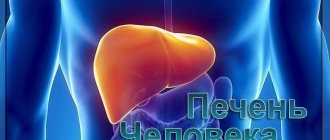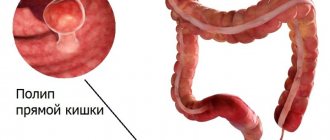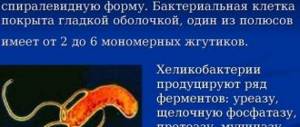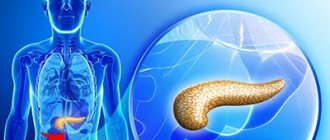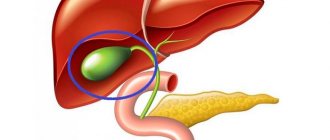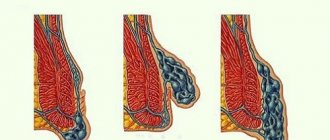To clarify the clinical picture, in the presence of abdominal pain, it is important for the doctor to know their location, intensity, and duration. The phrase “iliac region” used by doctors is not clear to everyone. Therefore, it is worth understanding what it means. In the projection of the iliac region on the right and left are the most important organs from different body systems: digestive, genitourinary, vascular, therefore the presence of pain is evidence of the development of a pathological process in one of them.
The article discusses the most common symptoms and signs of diseases in which abdominal pain is located in the left or right iliac region. Also considered is a list of pathologies that can cause nagging, sharp, aching, dull, throbbing pain in the left or right iliac region, severe and sharp pain, throbbing, burning, cramping, stabbing pain in the left or right abdomen.
What diseases can there be if it hurts in the left or right iliac region?
The iliac region is the collection of anterolateral sections of the peritoneum located from the lower ribs to the pelvic bones and the suprapubic area. From the point of view of doctors, it is more correct to call this area of the peritoneum the ilioinguinal, since it includes the zones of the groin areas with the underlying part of the peritoneum - the iliac fossa. The area where the right iliac region is located includes sections of the ileum and cecum, the appendix, and the ascending colon begins here. When the digestive tract is minimally full, the area of the cecum is partially covered by the small intestine. If gases accumulate in excess in the lumen of the cecum, practically the entire space of the iliac fossa is allocated to it.
In the area where the left iliac region is located, there are intestinal loops, including the jejunum and sigmoid colon with the mesentery, and here the colon ends in its descending part. The sigmoid colon, curved in a loop, extends from the iliac crest to the third sacral vertebra. When the bladder cavity is filled, the same applies to the rectum, the S-shaped sigmoid zone moves into the space occupied by the iliac fossa.
The iliac region also includes the vena cava section, ureters, nerve plexus, vascular branches from the appendages (ovaries with fallopian tubes), rounded uterine ligament (women), vas deferens (men).
Structure
The iliac region is located in the lower part of the abdominal cavity, covering its sides, as well as the lower abdomen. In order to ensure high-quality diagnosis and control over the health of the internal organs of the digestive and genitourinary systems, the ileum is divided into 2 main structural segments. This part of the body has the following structure.
The iliac region consists of the left and right parts
| Name of the structural part of the iliac region | Location in the abdominal cavity |
| Left | This part of the iliac region is located inside the abdominal cavity in the space between the lower left row of ribs and the ilium. |
| Right | The right iliac fossa covers the abdominal cavity from the right side from the lower ribs to the ilium. |
If we look at the anatomical structure of this part of the peritoneum in the pictures, we get the visual impression that the left and right iliac regions are located directly above the lateral part of the pelvic bones or directly above the hip joints.
Both parts of the ileum are located opposite each other and perform a single physiological function as a reservoir for the internal organs of the digestive and genitourinary systems.
Diagnosis of pain in the left iliac region of the abdomen
If the therapist considers further examination of the patient appropriate, he refers him to those specialists who, based on clinical manifestations, will determine a list of diagnostic measures. Perform:
1 rectoscopy, colonoscopy;
2 fibrogastroduodenoscopy;
3 ultrasound examination of the condition of the gastrointestinal tract and pelvis;
4 x-ray of the lumbar spine.
It is not advisable to relieve the severity of pain with painkillers before consulting a doctor. Analgesic drugs reduce the level of sensitivity, which can make it difficult to establish a correct diagnosis.
Treatment
Treatment of diseases of the iliac region is symptomatic. In the case of the development of dysbacteriosis, colitis with infectious inflammation of the mucous membrane of the sigmoid colon, antibacterial agents are used, the active components of which are effective against microorganisms of specific strains. The type of antibiotic is selected based on the results of laboratory diagnostics.
Appendicitis, volvulus of the sigmoid colon, malignant and cancerous neoplasms, blockage of the ureter with stones, acute inflammation of the prostate gland with impaired urine outflow require surgical intervention.
Most operations performed on the organs of the iliac region are not complicated. If you consult a doctor in a timely manner, the prognosis for a full recovery is positive.
The iliac region is a depression in the lower abdomen that is divided into the right and left sides. Its cavity contains the cecum, sigmoid colon, ureter, uterine appendages in women, vermiform appendix, and vas deferens in men.
The depression is located between the ilium and the lower ribs. Diseases of this part of the body are associated with dysfunctions of the digestive and genitourinary systems. Treatment of pathologies is symptomatic. Includes the use of anti-inflammatory, antibacterial agents, as well as surgical intervention.
Article design: Vladimir the Great
Causes of pain in the left iliac and right iliac region
Pain in the left iliac region, why the left abdomen hurts, causes of pain
The causes of pain in the left abdomen, in the left iliac region, are often associated with disturbances in the functioning of the gastrointestinal tract, in particular with intestinal pathology. Why it hurts in the left iliac region can be guessed by palpating this area of the peritoneum. It is worth paying attention to all manifestations of the painful condition:
1 body temperature, if it is elevated, even slightly;
2 presence of swelling;
3 defecation disorders (constipation or diarrhea with mucous impurities).
Inflammation of the walls of the colon, called colitis, is characterized by a set of listed symptoms. Failure to see a doctor in a timely manner may result in the transition of an acute condition to a chronic one, which lasts for a long period.
Due to the formation of ulcerative defects in the intestinal walls (nonspecific ulcerative colitis), the patient is bothered by spasms, pain in the left iliac region usually increases when walking. Defecation disorders are observed when bloody inclusions appear in liquefied stools. A similar clinical picture is observed with dolichosigma, a specific condition of the sigmoid colon, when it abnormally lengthens.
Burning and pain in the left abdomen may be signs of Crohn's disease. In addition to severe pain, the patient complains of diarrhea, which is disturbing even at night. Progressive pathology is dangerous due to changes that provoke narrowing of the intestines and bleeding of ulcerative defects. Diagnosis of Crohn's disease is based on the results of irrigoscopic examination and endoscopic examination of the intestinal walls.
Oncopathology is diagnosed using a set of diagnostic measures (recto-colonoscopy) with analysis of biopsy material. Malignant neoplasms at the initial stages of development do not differ in the severity of symptoms, but with the growth of tumors and their metastases in other areas of the peritoneum and distant organs, all body systems suffer. Localization of the tumor in the colon can lead to a narrowing of its lumen, which interferes with the movement of intestinal contents. The patient suffers from persistent constipation, laxatives do not help much, and constant distension in the intestines is felt.
If a woman has a sharp pain in her left abdomen, the cause may be related to the field of gynecology. Aching or nagging pain in the lower abdomen on the left appears due to an inflammatory process in the left appendage or uterine pathology. If an ectopic pregnancy is suspected, the patient should be hospitalized immediately to prevent the development of serious complications.
Pain in the left iliac region radiates to the lower back, often with renal dysfunction, changes in the ureters. In such cases, you need to consult a nephrologist. Remember, if your stomach hurts and aches on the left, you should not take medications uncontrollably, this can only cause harm. Consult with specialists.
Pain in the left iliac region, why the left abdomen hurts, causes of pain
To determine why it hurts in the right iliac region, it is necessary to differentiate a number of pathological conditions. Intense, throbbing pain, accompanied by attacks of nausea and vomiting, is a subject for additional tests to identify an acute pathological process in the appendix. Even not very intense pulling or aching pain in the lower abdomen on the right should not be ignored, because it may indicate mesadenitis (inflammation in the mesenteric lymph nodes), pyelonephritis, and ovarian pathologies in women.
To understand the problem, pain in the right side of the iliac region, you need to undergo a series of examinations. In some cases, laparoscopic and X-ray techniques are added to traditional studies of the intestinal condition using a colonoscope and endoscope. Pain in the right iliac region upon palpation may increase with the progression of cholelithiasis, ulcerative lesions of the intestine, and gynecological diseases.
When male patients have severe abdominal pain on the right side, it is worth visiting an andrologist and clarifying the condition of the prostate gland and seminal ducts. Signs of inflammation in these organs or the development of hyperplasia are manifested by paroxysmal pain.
Pain in the right iliac region when moving is one of the warning signs that requires consulting a doctor, even when the patient feels completely healthy at rest. Many diseases in the initial stages are hidden and manifest minor symptoms. Modern medicine with the latest diagnostic techniques has extensive capabilities, thanks to which it is possible to identify and treat most serious diseases.
Fracture of the ilium
Fractures of the above bones usually occur due to compression of the pelvic bones or a direct blow. As for children, a fracture of the wing of this bone can occur as a result of spontaneous contraction of the gluteal muscles.
The main symptoms of an iliac bone fracture are:
- Sharp pain that intensifies even with the slightest attempt to move the leg;
- Severe tissue swelling in the area of the fracture;
- A sharp decrease in the functioning of the lower limb on the side of the injury (with a fracture of the left ilium, the functions of the left leg are impaired, and with damage to the right, the right lower limb, respectively).
In addition, a fracture of this bone leads to significant hemorrhage. The hematoma spreads over the upper third of the thigh, as well as almost the entire lateral surface of the pelvis. Very often in this case there is tension in the muscles of the anterior abdominal wall.
If medical specialists suspect a fracture of the above bone, they advise immediately transporting the patient to the hospital. They recommend transporting it lying on your back, placing a small cushion under your knees. In case of a non-displaced fracture, the traumatologist performs local anesthesia, after which he places the leg in a special splint. The patient is placed on strict bed rest for three to four weeks.
A displaced fracture of the iliac bone requires surgical intervention, the main purpose of which is reposition (comparison of fragments). After surgery, the leg is placed in a splint. The victim is also prescribed bed rest for a month. After thirty days, the patient is prescribed massage, physical therapy and physiotherapeutic procedures. Complete restoration of leg function after discontinuation of bed rest is observed in approximately one and a half to two months.

